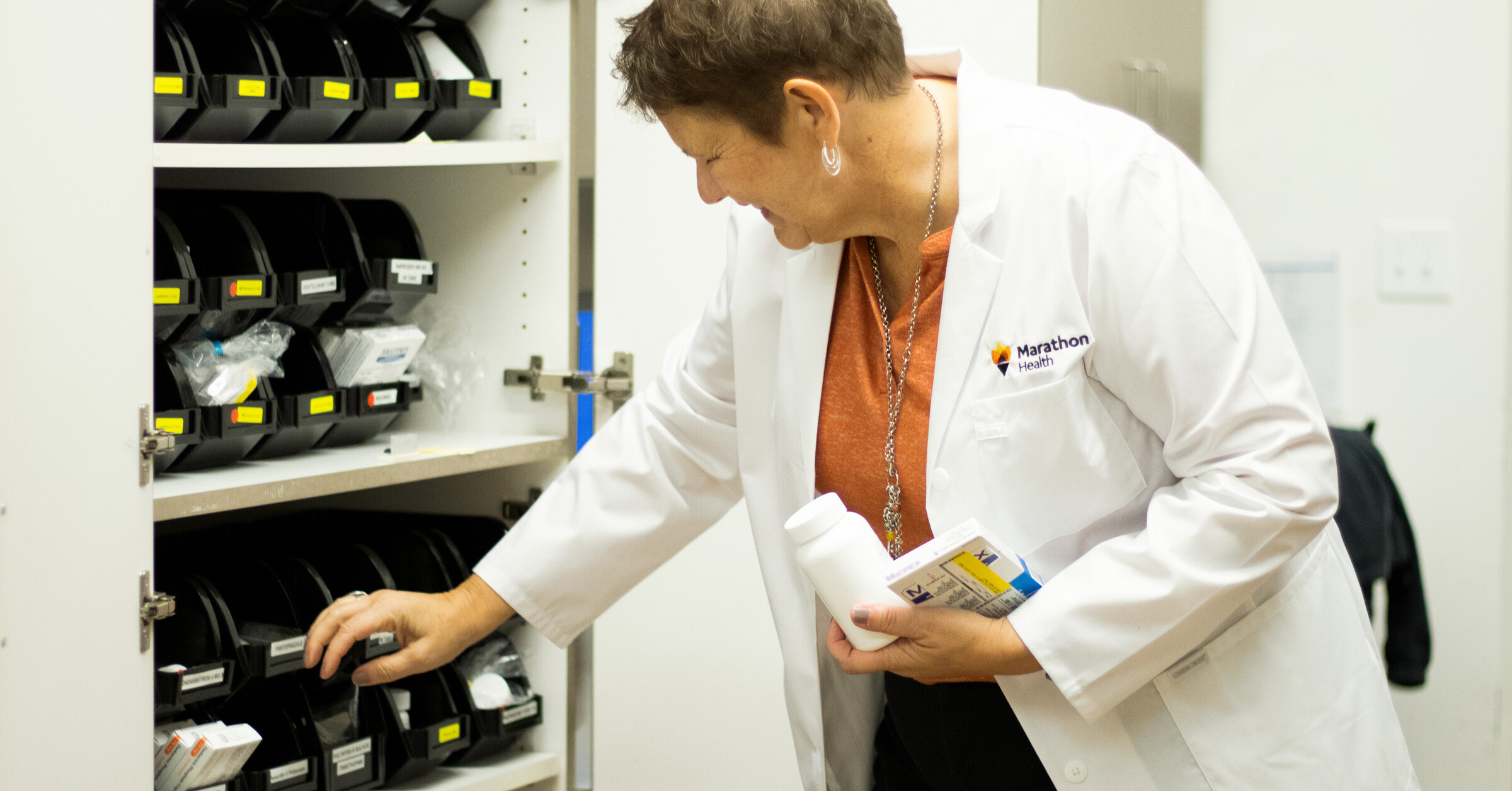3 Benefits of Offering Prescriptions at Your Employee Health Center
June 27th, 2023 | 3 min. read
By Kristy Esch

By offering employee prescriptions through worksite health centers, businesses are seeing three major benefits, including higher medication compliance rates, increased savings for employees and lower prescription costs for their company.
Americans not only pay 2.5 times more for prescriptions compared to those in similar high-income nations, but the share of the U.S. population taking prescription drugs is also higher in the U.S. than in most peer nations.
To combat sky-high costs and improve access to much-needed medications, many employers now provide prescriptions directly through their onsite or network health center.
Employer-sponsored health centers offer hundreds of common prescriptions to treat everything from sinus infections and lower back pain to chronic conditions including diabetes, hypertension, hypothyroidism and asthma.
Organizations obtain the medications at cost from their health center provider, who pre-purchases them from a supplier at a discounted rate. Employers then dispense the medications directly from their worksite or Network health centers — located conveniently around a city — at little to no cost to the employee.
Check out three top benefits of offering medications through your dedicated employee health center.
1. Employee Prescriptions Improve Compliance
Expensive prescription costs can prevent patients from taking needed medication, often for serious conditions like diabetes. One study found that 30% of respondents skipped taking a medication due to costs.
“If I have a chronic condition like high blood pressure or diabetes, I’m going to be more compliant if I can get my medications for free, either at the appointment or via home delivery, and don’t have to make a trip to the pharmacy,” says Abby Kolls, Manager of Vendor Relationships and Procurement at Marathon Health. “And I’m also less likely to miss days because I wasn’t able to go to the pharmacy and refill it.”
On-site health centers that offer prescriptions — in addition to home delivery — also improves medication compliance, as some employees face travel and mobility barriers that make it difficult to visit a pharmacy. Employees can pick up their prescriptions during the appointment, eliminating a trip to the pharmacy altogether. Or, employees can set up automatic refills to ensure they never miss a dosage.
“We’re like a one-stop shop,” Kolls says. “If a member comes in for an appointment, whether it’s for a chronic condition or for an acute sick visit, they can pick up their medications before they leave — at little to no cost.”
Karen Mueller, CBC, Executive Vice President HUB/Horan, says making it easy for employees to get what they need when they need it is key. “You can get your labs done at the worksite health center, you can get prescriptions, and the other care services you need,” she says. “It’s efficient and you see greater adherence to care because it’s convenient for employees.”
2. Employees Save Money with Onsite Prescriptions and Home Delivery
Despite being covered by an insurance plan, employees still incur fees and copays to obtain prescribed medications. And depending on the medication, costs quickly become unmanageable.
Out-of-pocket costs are particularly high for people with chronic conditions. For instance, adults with diabetes pay almost $700 out of pocket each year in order to manage the condition. With an employer health center, employees can access medications like Metformin, a common medication for controlling blood sugar levels in patients with Type 2 diabetes, at little to no cost.
Employers leverage data from their health center partner to ensure their medication offerings match their unique employee needs. Rather than providing as many medications as possible, employer health centers dispense common prescriptions that truly benefit their employees.
“We’ll market to our employees and say, ‘When you go to the clinic, guess what, it doesn’t cost you anything. And by the way, there’s no cost attached to the pharmaceuticals either,’” says Dan Marchetti, CFO at Urschel Laboratories. “We have employees in plans that have copays, but it costs nothing to get their medications from the health center. It’s also an incentive for them to visit the health center since it’s no money out of their pocket. And when it’s all said and done, it ends up costing us less money as well.”
3. Employers See the Savings by Providing Medication
Employers save in multiple ways by offering medications via their worksite health centers. For one, the fees from obtaining wholesale medications from a health center partner cost significantly less than obtaining medications through a traditional health plan, not to mention it bypasses insurance completely.
More importantly, when employees take medications as prescribed, they become healthier, which reduces downstream costs from expensive interventions or trips to the emergency department.
A 2022 study from the Centers for Disease Control and Prevention found 59.5% of emergency department visits were made by adults with at least one chronic condition, while a Kaiser Family Foundation study shows employers pay an average of $2,453 per emergency department visit.
“Ideally, you should see a cost reduction at multiple levels, because your medication costs go down, and then your health plan costs should go down too because your employees get the routine healthcare they need,” Kolls says.
Note: Not all states allow worksite health centers to offer prescriptions. Check with your employer healthcare partner or benefits consultant to understand your state regulations.